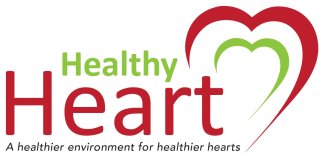Protect Your Health from Air Pollution this American Heart Month
February is American Heart Month – a time to bring attention and awareness to this cardiovascular health. A problem that is not only one of public health, but also one of equity that holds personal significance to me as a Black man in America. Cardiovascular disease is still the number one killer in the U.S., accounting for one in three deaths – and Black Americans are more likely to die from heart disease than any other demographic group. These numbers are alarming, and that’s why I want to share my insight with you today.
You probably know some common tips to reduce your risk of cardiovascular disease: manage blood pressure, stop smoking, exercise regularly, and eat a heart healthy diet. But what you may not know is that air pollution is also a risk factor for nearly 92 million American adults who have some form of cardiovascular disease or stroke-related health problem.
For over 20 years, scientists at EPA and other research organizations have worked to understand how our environment interacts with genetic, social, and health factors to contribute to the progression of blood vessel and heart diseases like high blood pressure, rhythm disorders, heart attacks, strokes, and heart failure. The science shows that air particle pollution, also known as particulate matter (PM), is a risk to the heart and vascular system for those with heart disease.
Heart Health and Equity

Communities of color, across all income levels and regions, breathe more particulate air pollution on average, according to a study by researchers at the EPA-funded Center for Air, Climate, and Energy Solutions. Inequities reported in their study are a result of systemic racism, where communities of color are disproportionately exposed to pollution over time. These results have broader implications for how regulations might be designed to effectively address environmental injustice for communities of color exposed to air pollution.
For me, I observe American Heart Month’s Wear Red Day every year for my friend who is living with a valvular heart condition. Even after a recently successful surgery, she continues to advocate for equitable heart health in the Black community by sharing her experiences and connecting with friends and neighbors who are struggling with similar issues. My family and friends dealing with cardiovascular health issues have made tremendous strides to improve their personal livelihood by taking charge of their own health where they can: adopting heart healthy habits and paying close attention to potential environmental exposures, like air pollution. I wear red for everyone in my community that continues to suffer from the heart health effects of environmental injustice.
Key Actions to Protect Your Health from Air Pollution
- Know when and where particle pollution levels may be unhealthy. Particle pollution levels can be high at any time of the year. They can be higher near busy roads or industrial areas or during rush hour traffic. When there is smoke in the air from forest fires, burning vegetation or wood stoves, higher levels of particle pollution are present. You can check AirNow to find this information.
- Check the Air Quality Index, which provides forecasts of daily air quality. This index provides six color-coded categories that show different levels of health concern for air pollution levels in your area to help you actively manage your health.
- Plan activities when and where pollution levels are lower. When outdoor particle levels are unhealthy, delay activity or exercise until the air is cleaner or move the activity indoors.
- Reduce overall risk of heart disease or stroke. Make healthy lifestyle changes with the help of your physician or other health care professionals.
- Know the warning signs of heart attack or stroke. If you feel symptoms, even if they go away, stop any activity, and seek medical help immediately.

For additional resources to protect your heart health, visit our Healthy Heart Toolkit. The toolkit provides specific information for everyone about how air pollution impacts heart health and what steps that you can take to avoid exposure. If you are a health care practitioner, you can use the resources here to help inform your patients about environmental risks to their heart health.

About the Author
André Wade
Human Capital Division - ORD Black Employment SEPM
Office of Research and Development
Andre Wade, an EPA employee for over 10 years, is very passionate about promoting diversity, equity, inclusion, and accessibility within the Agency. In 2018, he led the Combined Federal Campaign (CFC), helping to raise over $1 million in donations to support charitable organizations. He has expertise in contracts, budget development, as well as emergency response. In his spare time, he is an avid writer, a middle school tutor, and an assistant basketball coach for a local school.
Editor’s Note: The views expressed here are intended to explain EPA policy. They do not change anyone’s rights or obligations. You may share this article. However, please do not change the title or the content, or remove EPA’s identity as the author. If you do make substantive changes, please do not attribute the edited title or content to EPA or the author.
EPA’s official web site is www.epa.gov. Some links on this page may redirect users from the EPA website to specific content on a non-EPA, third-party site. In doing so, EPA is directing you only to the specific content referenced at the time of publication, not to any other content that may appear on the same webpage or elsewhere on the third-party site, or be added at a later date.
EPA is providing this link for informational purposes only. EPA cannot attest to the accuracy of non-EPA information provided by any third-party sites or any other linked site. EPA does not endorse any non-government websites, companies, internet applications or any policies or information expressed therein.
